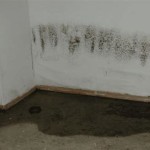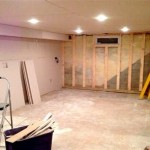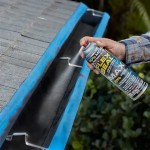Foam Board Basement Wall Insulation
Foam board insulation is a rigid, lightweight material made from expanded polystyrene (EPS) or extruded polystyrene (XPS). It is commonly used to insulate the walls of basements, crawl spaces, and other below-grade areas.
Foam board insulation is an effective way to reduce heat loss and improve energy efficiency in your home. It can also help to prevent moisture problems, such as mold and mildew, by creating a barrier between the cold, damp ground and the warm, dry air inside your home.
There are two main types of foam board insulation:
- EPS foam board is made from expanded polystyrene beads that are fused together to form a rigid panel. EPS foam board is lightweight and easy to install, but it is not as strong as XPS foam board.
- XPS foam board is made from extruded polystyrene, which is a denser and more rigid material than EPS. XPS foam board is more expensive than EPS foam board, but it is also more durable and has a higher R-value.
The R-value of a foam board insulation panel is a measure of its resistance to heat flow. The higher the R-value, the more effective the insulation will be at reducing heat loss.
When choosing foam board insulation for your basement walls, it is important to consider the following factors:
- R-value: The R-value of the foam board insulation should be high enough to meet the code requirements for your area.
- Thickness: The thickness of the foam board insulation should be sufficient to provide the desired level of insulation.
- Durability: The foam board insulation should be durable enough to withstand the rigors of basement use.
- Cost: The cost of the foam board insulation should be within your budget.
Once you have selected the right foam board insulation for your basement walls, you can install it yourself or hire a professional contractor to do it for you.
To install foam board insulation on basement walls, follow these steps:
- Clean the basement walls of any dirt or debris.
- Apply a bead of construction adhesive to the back of the foam board insulation panels.
- Press the foam board insulation panels into place on the basement walls.
- Secure the foam board insulation panels with plastic fasteners.
- Cover the foam board insulation panels with drywall or another type of wall covering.
Foam board insulation is a quick and easy way to improve the energy efficiency of your basement and make it more comfortable to use.

How To Insulate A Basement Wall Greenbuildingadvisor

How To Install Rigid Foam Board Insulation On Basement Concrete Foundation Walls At Improvements

How To Insulate Your Basement S Concrete Walls The Seattle Times
Basement Wall Insulation Using Rigid Foam Board

How To Insulate A Basement With Rigid Insulation Buildwithhalo Com

How To Insulate Diy Your Basement With Spray Foam

Average Cost To Insulation A Basement Forbes Home

Basement Insulation Maryland Northern Va Call Today

Owens Corning Foamular 150 2 In X 4 Ft 8 R 10 Scored Squared Edge Rigid Foam Board Insulation Sheathing 45w The Home

Can You Install Foam Boards Directly Against Basement Walls Ecohome
Related Posts







